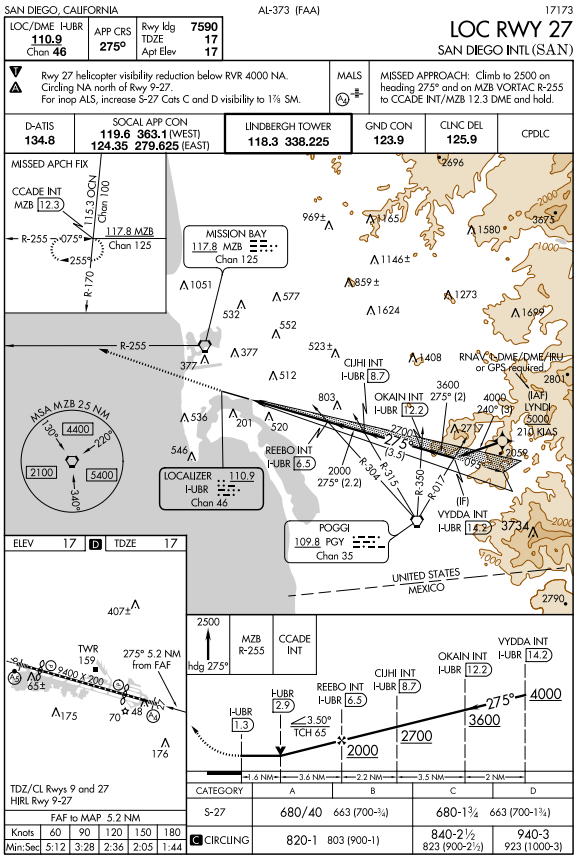

This is probably the most common non-precision approach in ZLA. Because of obstacles in the approach path, it doesn’t meet the requirements for an ILS approach. LYNDI being an IAF allows an aircraft from the E/NE to be cleared for the approach without vectoring, but traffic considerations and arrivals from the NW will often lead you to vector to final for the approach.

It has some fairly complex MVA considerations. As with any approach you must vector to intercept final at least three miles from the FAF (REEBO in this case). REEBO has a published minimum altitude of 1800’. With very precise vectoring, it is possible to vector an aircraft to intercept final inside the 2100’ MVA area exactly 3 miles from REEBO. However, a little over 4 miles from REEBO, the MVA rises to 3800’. You will normally vector to this approach through this 3800’ MVA area. At 3800’, the aircraft would be 2000’ above the minimum altitude at REEBO. Using our 300’ per mile rule, this means that the aircraft must intercept final at least 6 miles from REEBO if he’s at 3800’ (again, he must be at 3800’, not issued a descent clearance to 3800’). The phraseology would be familiar:
“N123SX, 8 miles from REEBO, turn right heading 250, maintain three thousand eight hundred until established on the localizer, cleared Localizer runway two seven approach.”
Further out on the localizer, the MVA rises to 5000’. Similar to the ILS 24 at CRQ we previously discussed, there is no published procedure on the localizer course east of VYDDA. If you vector to intercept through the 5000’ MVA area and use “maintain 5000 until established on the localizer,” the pilot will have to remain at 5000’ until VYDDA where the published approach begins. This will put him at an altitude higher than the 300’ per mile rule allows. If you vector through the 5000’ MVA area, one solution is to delay issuing the approach clearance until the aircraft enters the 3800’ MVA area. Use phraseology like:
“N123SX, turn right heading 250, join the localizer”
Once he’s clear of the 5000’ MVA area:
“N123SX, 4 miles from VYDDA, maintain three thousand eight hundred until established on the localizer, cleared Localizer approach.”
There will be times where you will want to break the approach clearance up into separate transmissions for other reason too. This might be desirable because of pilot proficiency, frequency congestion, or due to traffic. This is always permissible for any type of vectored approach clearance, and here is a sample application of this procedure for this approach:
“N123SX, turn right heading 250, intercept the localizer.”
Once he reports established or is observed to be established on a published segment of the final approach course:
“N123SX, Over VYDDA, cleared Localizer approach.”
If the pilot is established on a published segment of the approach, no altitude information is needed in the approach clearance.